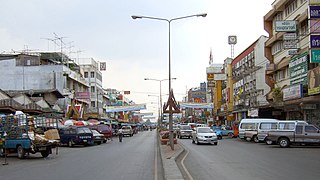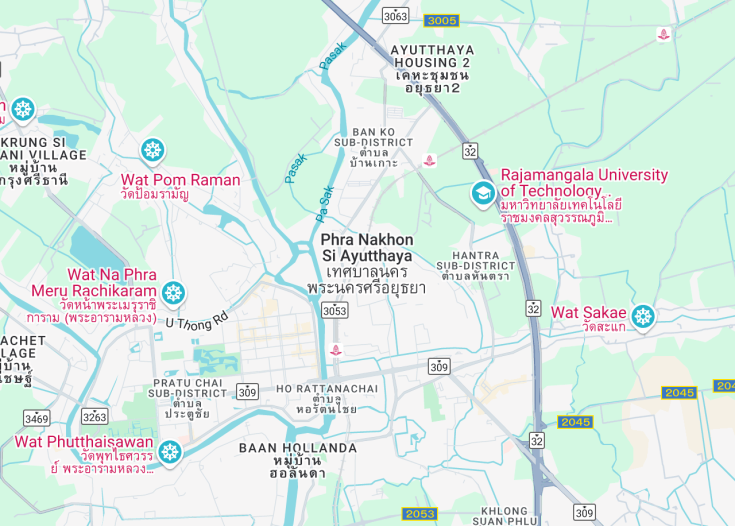The ancient city of Ayutthaya, located in Thailand, resonates as a monumental testament to historical grandeur and cultural significance. Founded in 1350, Ayutthaya flourished from the 14th to the 18th centuries, serving as the capital of the Siamese Kingdom and a major trading post. Its strategic placement at the confluence of three rivers facilitated a prosperous trade network spanning Asia and beyond. Today, the extensive ruins, characterized by towering prang (reliquary towers) and gigantic monasteries, many of which are still in excellent condition, offer a glimpse into its past splendor and are recognized as a UNESCO World Heritage Site.
Prepare for Thailand’s tropical climate; lightweight, breathable clothing and good hydration are essential as you explore Ayutthaya’s magnificent outdoor ruins and temple complexes.
Consider hiring a knowledgeable local guide; their insights will enhance your understanding of Ayutthaya’s rich history, helping you fully appreciate the architectural and cultural heritage of this ancient city.
Top things to do & see in Ayutthaya
Select the following sights and activities to discover best tickets and tours available in Ayutthaya.
Ayutthaya: Ancient City of Temples
| Country | Thailand |
| Time in Ayutthaya | GMT+7 |
| Language spoken | Thai |
| Population | 53,888 (source: The City Population data, 2022) |
| Currency | Thai Baht (฿, THB) |
| Airports |
|
Ayutthaya, once the magnificent capital of the Siamese kingdom from 1351 to 1767, stands as an historical city brimming with temple ruins interspersed by contemporary neighborhoods. This city is located in the central plains of Thailand and encapsulates a storied history that draws cultural enthusiasts and history scholars alike. The ruins of Ayutthaya are recognized as a UNESCO World Heritage Site, resonating the city’s historical and cultural significance amidst the intertwined challenges of modernity and preservation.
Fascinating aspects of Ayutthaya’s allure include its vast array of temple ruins. Famous sites such as Wat Phra Si Sanphet, Wat Mahathat—known for the Buddha head entwined within tree roots—and Wat Ratchaburana provide picturesque vistas while educating visitors on the region’s rich past. Additionally, the city’s proximity to Bangkok makes it a popular day-trip destination for those looking to escape the hustle and bustle of the capital to immerse in Ayutthaya’s tranquil antiquity.
Besides historical sites, Ayutthaya also offers a taste of authentic Thai cuisine with a local flair. Markets and street vendors offer dishes that are both unique to Ayutthaya and staples of Thai culinary tradition. The city’s geographical layout, characterized by its location at the confluence of three rivers, has historically made it a significant trade center, a fact that has influenced local culture extensively.
Today’s Ayutthaya not only stands as a testament to Thailand’s historical landscape but also showcases how modern communities integrate with significant historical contexts. It serves as a profound educational site for those interested in archaeology, architecture, and history, giving a glimpse into the past through its resilient monuments and informed guided tours. Visiting Ayutthaya is like a journey back in time where one can explore the remnants of a once-thriving capital as well as appreciate the serene beauty and the continuous legacy of Thai culture.
Where is Ayutthaya?
Ayutthaya is located in the central plains of Thailand, approximately 80 kilometers north of Bangkok.
Distances:
| Route | Distance by car | Time by car |
|---|---|---|
| Bangkok to Ayutthaya | 80 km | 1 hour |
| Chiang Mai to Ayutthaya | 560 km | 8 hours |
| Pattaya to Ayutthaya | 170 km | 2.5 hours |
What is Ayutthaya famous for?
Ayutthaya is renowned for its historical park, which is home to numerous well-preserved ruins of the former capital of the Kingdom of Siam, reflecting its past riches and cultural significance.
History
1350-1767: The Rise and Fall of the Ayutthaya Kingdom
Ayutthaya, officially founded in 1350 by King U Thong, who sought to escape a smallpox outbreak, swiftly grew into a significant center of politics, economic trade, and culture in Southeast Asia. Its strategic location on an island surrounded by three rivers connected it to the sea and facilitated both defense and international trade, including with nations far afield like China, India, Japan, and Persia. The city flourished as both a diplomatic and commercial center, becoming one of the world’s largest urban areas by the 18th century with a population of around 1 million people.
1767-Present: Post-Destruction and Modern Development
Ayutthaya experienced a significant setback in 1767, when it was invaded and destroyed by the Burmese army, which led to the collapse of the kingdom. The city was burned, and its magnificent temples and palaces were reduced to ruins. In the late 18th century, the capital of Thailand (then called Siam) was moved to Bangkok. Since then, Ayutthaya has remained a smaller city near Bangkok but has gradually become an important archaeological site. The ruins of Ayutthaya have been preserved and were declared a UNESCO World Heritage Site in 1991, recognizing their historical and cultural significance. Today, Ayutthaya stands as a testament to the complex history of Thailand, attracting scholars, tourists, and history enthusiasts from around the world.
Visit Ayutthaya
What to see and do in Ayutthaya
Exploring Ayutthaya, visitors are greeted with a breathtaking panorama of historical ruins dotted amidst lush greenery, rivers, and parks. Notable sites include the Ayutthaya Historical Park, which encompasses grand temples like Wat Phra Si Sanphet, with its distinctive three chedis, and Wat Mahathat, famed for the Buddha head entwined within tree roots. A river cruise around the island offers a unique vantage point of the city’s ancient waterways and architecture.
- Visit the Ayutthaya Historical Park.
- Take a boat tour around the island.
- Explore the local markets for traditional Thai crafts and snacks.
Festivals and Events in Ayutthaya
Ayutthaya hosts several cultural and historical events throughout the year. The Ayutthaya World Heritage Historical Park Fair, held in December, features exhibitions, historical tours, and cultural performances. The Songkran Festival in April transforms the city with water fights, traditional ceremonies, and street festivities celebrating the Thai New Year.
Best time to visit Ayutthaya
The best time to visit Ayutthaya is during the cooler dry season from November to February, when temperatures are more comfortable for exploring the vast outdoor sites. The weather is pleasant, and there is less rainfall, making it ideal for photography and extended tours around the ancient ruins.
Is Ayutthaya worth visiting?
Ayutthaya is undoubtedly worth visiting for anyone interested in history, architecture, or culture. The city’s array of stunning temple ruins, historical significance as a former Siamese capital, and its status as a UNESCO World Heritage Site make it a fascinating destination. Visitors can immerse themselves in Thailand’s rich history while enjoying the scenic landscapes and vibrant local life that Ayutthaya has to offer.










